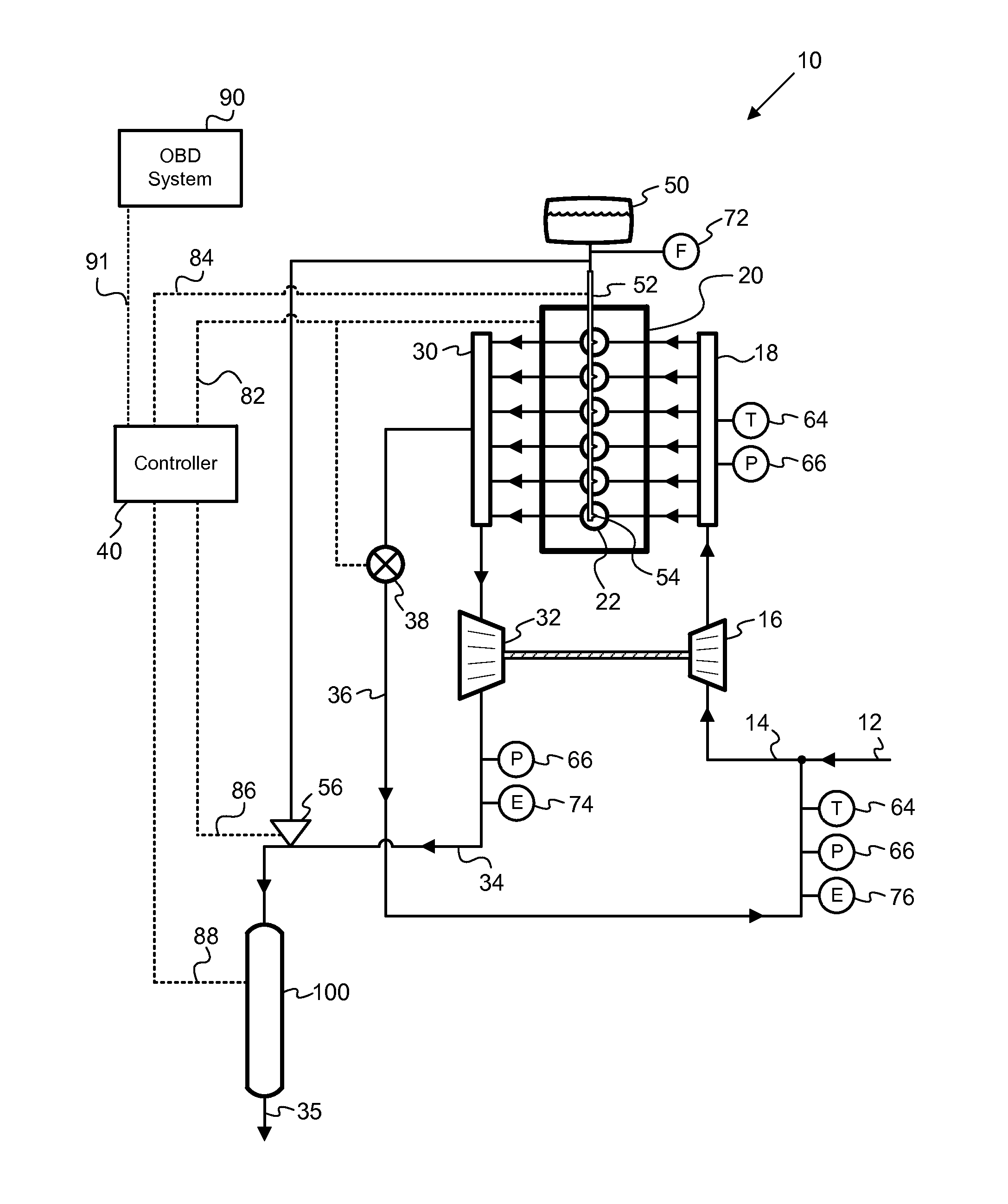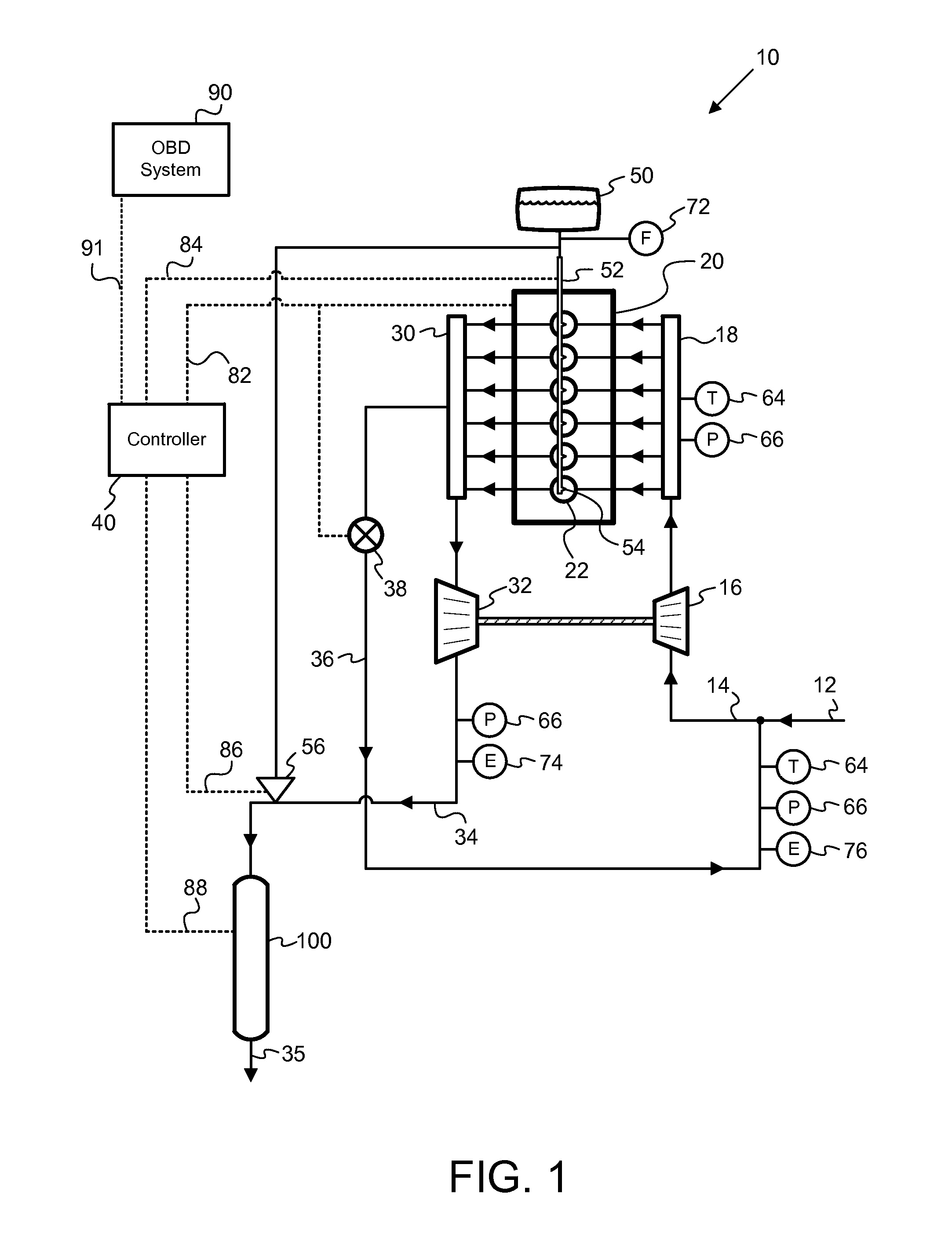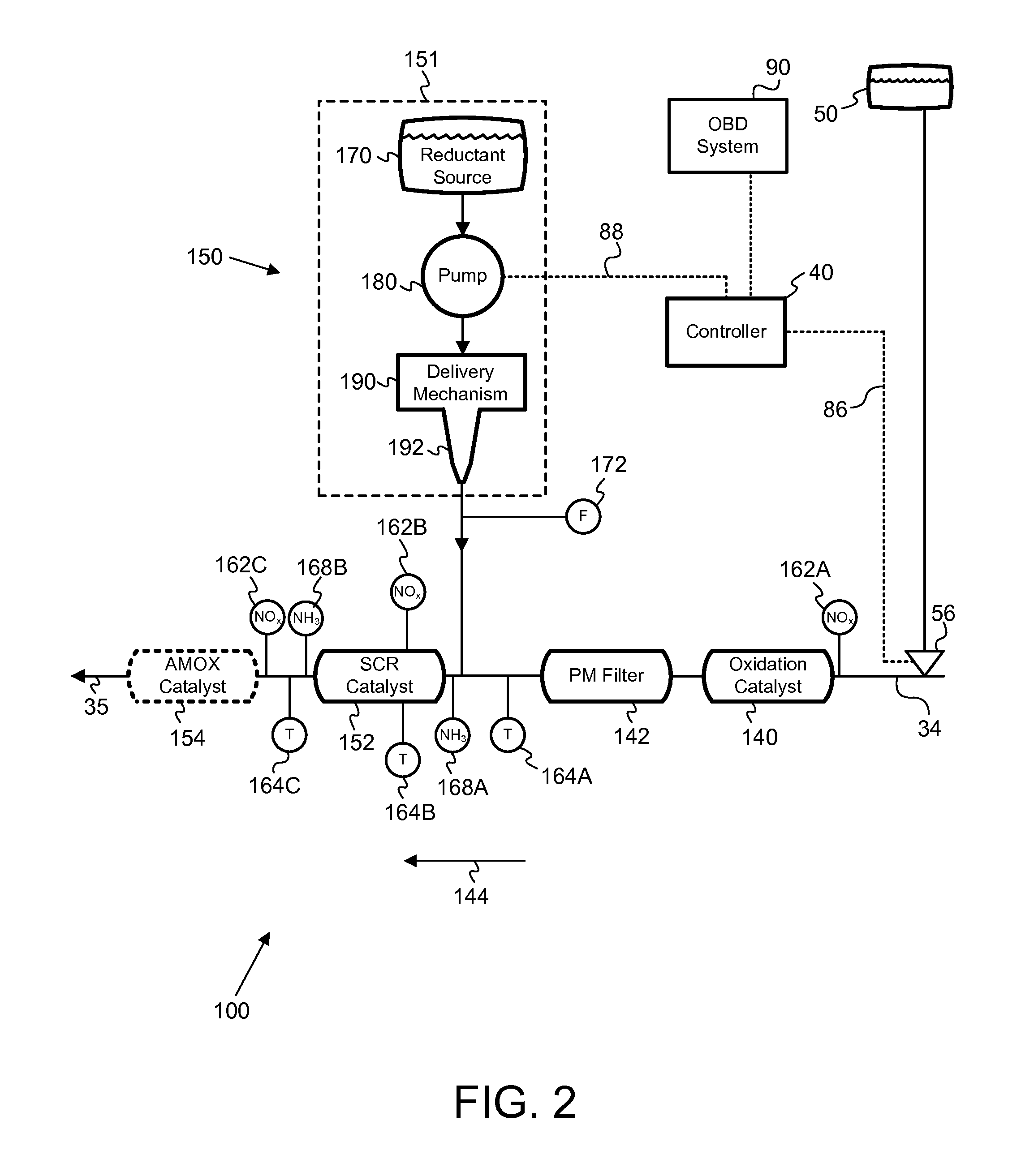Method, system, and apparatus for diagnosing an exhaust aftertreatment component
- Summary
- Abstract
- Description
- Claims
- Application Information
AI Technical Summary
Benefits of technology
Problems solved by technology
Method used
Image
Examples
Embodiment Construction
[0030]FIG. 1 depicts one embodiment of an engine system 10. The main components of the engine system 10 include an internal combustion engine 20 and an exhaust gas aftertreatment system 100 in exhaust gas-receiving communication with the engine 20. The internal combustion engine 20 can be a compression-ignited internal combustion engine, such as a diesel fueled engine, or a spark-ignited internal combustion engine, such as a gasoline fueled engine operated lean. On the intake side, the engine system 10 can include an air inlet 12, inlet piping 14, a turbocharger compressor 16, and an intake manifold 18. The intake manifold 18 includes an outlet operatively coupled to compression chambers 22 of the internal combustion engine 20 for introducing air into the compression chambers 22.
[0031]Within the internal combustion engine 20, air from the atmosphere is combined with fuel, and combusted, to power the engine. The fuel comes from the fuel tank 50 through a fuel delivery system includin...
PUM
 Login to view more
Login to view more Abstract
Description
Claims
Application Information
 Login to view more
Login to view more - R&D Engineer
- R&D Manager
- IP Professional
- Industry Leading Data Capabilities
- Powerful AI technology
- Patent DNA Extraction
Browse by: Latest US Patents, China's latest patents, Technical Efficacy Thesaurus, Application Domain, Technology Topic.
© 2024 PatSnap. All rights reserved.Legal|Privacy policy|Modern Slavery Act Transparency Statement|Sitemap



